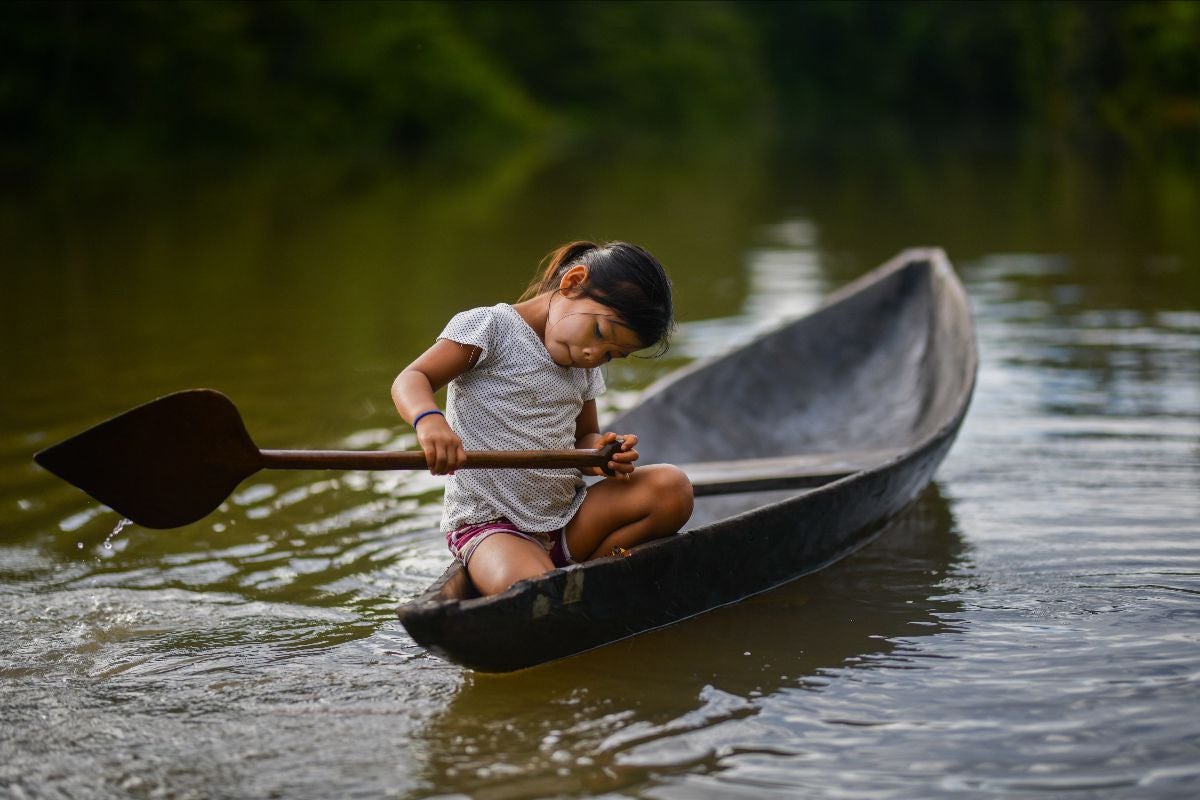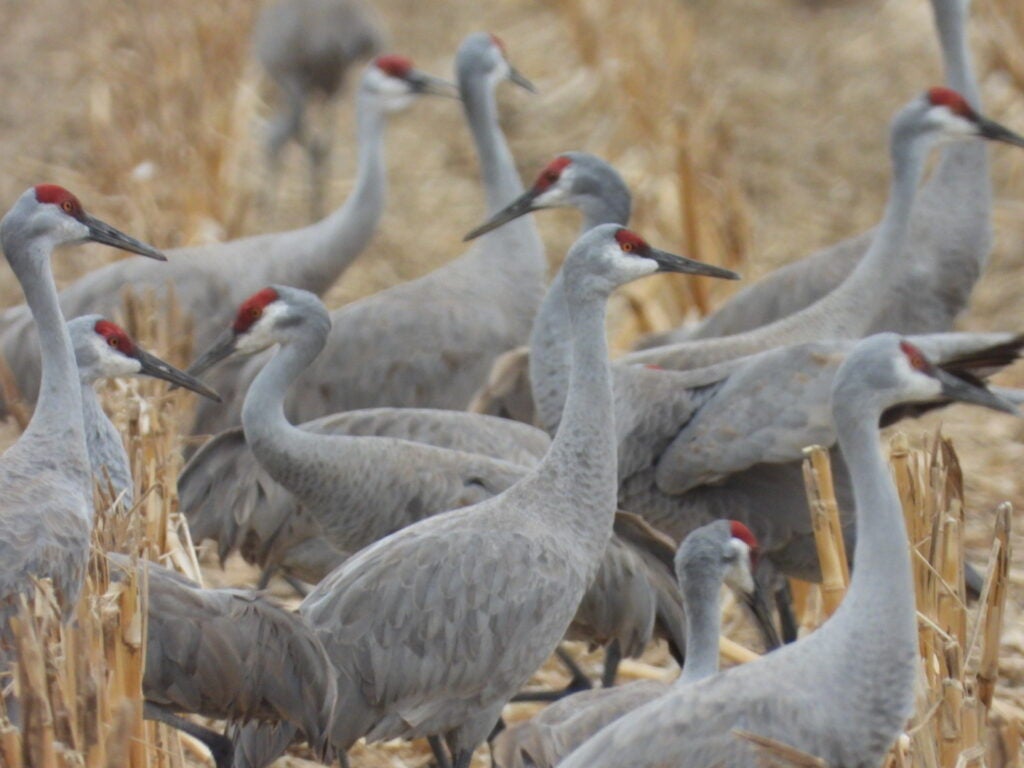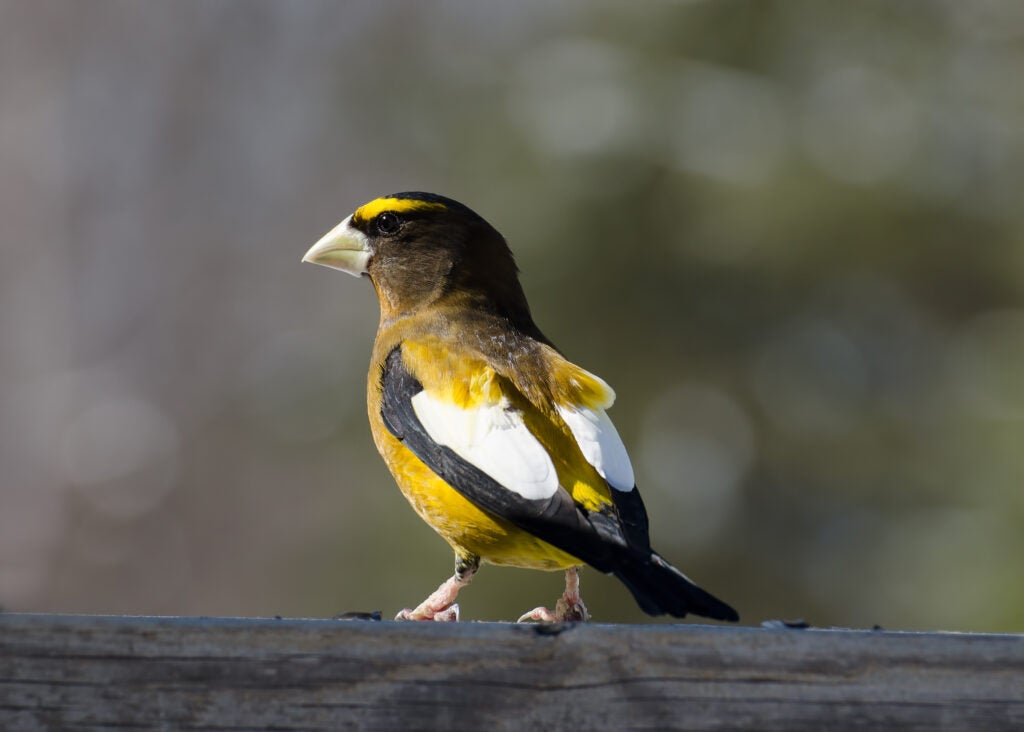Common Home Photography Showcase Winners
Fatigue, courage, futility, hope and perseverance: the Earth Commons and its signature Common Home magazine welcome the Georgetown community to express their feelings about our changing world and its inhabitants through the Common Home Arts Showcase.

Pete Marra releases a Red knot in Corpus Christi, Texas. Photo by Tim Romano 2018 courtesy of the Smithsonian Institution.
This year, we focus on photography that displays your perspective and contributes to the vibrant community dialogue around environment and sustainability. Pictured: “Female Faces of Change” by Victoria Smith, 2022 showcase winner.

Sandhill Crane. Due to habitat loss and hunting, their populations have declined, but conservation efforts in recent years have helped to stabilize their numbers. They are now considered to be a species of least concern on the International Union for Conservation of Nature (IUCN) Red List. Photo by Pete Marra.
We’ve also spent too much time and energy holding out hope for lost species, like the Ivory-billed Woodpecker, a wonderful but almost certainly extinct species that continues to capture imaginations and headlines, but which ultimately distracts us from taking steps to protect other fantastic creatures that still exist.
Just last week, the IPCC—the UN’s climate panel—released its annual climate change report, which provides an update to the signatories of the Paris Agreement about the science of climate change and where the world stands on its goals.
Like the Paris Agreement in 2015, the COP15 UN Convention on Biological Diversity (CBD) agreed to in Montreal last December was widely regarded as a pivotal, consequential moment for the future of Earth’s biodiversity. But the agreement that emerged from the conference (which the U.S. is not even party to) was a report lofty in concept but unenforceable in practice.

Long-billed Curlews are uncommon, numbered at 140,000 individuals by the North American Breeding Bird Survey.
CBD countries “pledged” to protect 30 percent of natural areas on the earth by 2030. As laudable as this sounds, it is intangible and unenforceable. None of the 20 biodiversity targets the CBD agreed to 10 years ago were achieved, leaving us with nothing but unbounded (and ungrounded) hope that this time countries will act.
Left out of the CBD negotiations were specific science-based measures to prevent future species extinctions by addressing specific causes of population declines. Meanwhile, more than 70 bird species in the U.S. alone are considered to be at tipping points that put them at risk of being listed under the Endangered Species Act.
Thinking about our children’s future, we can—and should—focus on achievable and impactful species conservation by using tangible, existing opportunities and mechanisms.
The United States has an opportunity to lead by example and pass landmark legislation through the Recovering America’s Wildlife Act, which would dedicate 1.3 billion dollars for state-level conservation and 97.5 million to tribal nations to recover and sustain fish and wildlife populations on reservations. This is low hanging fruit, and legislation that must pass in the next session of Congress.
Another opportunity: the United States is party to the Convention on Nature Protection and Wildlife Preservation in the Western Hemisphere, a visionary instrument put in place in 1942 that calls for protecting species from extinction, establishing protected areas, regulating international trade in wildlife, taking special measures for migratory birds, and encouraging the need for international co-operation in scientific research.
If we do not move from vague non-binding pledges and scattershot approaches to habitat conservation toward discrete, science-based conservation efforts, the natural world will continue to vanish before our eyes
Revitalizing that convention could focus hemispheric cooperation on the most urgent threats to our shared wildlife—threats we must address now if we want to avoid more species becoming ghosts in the binoculars of a passionate few. But we need to act fast.
Now is the time to recover the populations of miraculous birds like the whimbrel, mountain plover and evening grosbeak while we can still enjoy them in their natural habitats. We must lead by prioritizing conservation measures specifically tailored for each of these 70 species and others like them before they are formally listed.

Male Evening Grosbeak sitting on railing. According to the North American Breeding Bird Survey, Evening Grosbeaks populations dropped by an estimated 74% between 1966 and 2019.
Our new understanding of migratory science can pinpoint exactly where to act for each species, whether to prioritize the protection of critical habitats; the removal and reduction of threats from invasive species, including outdoor house cats; the reduction of chemical exposures from pesticides like neonicotinoids; or the design of wildlife-friendlier cities on migration routes.
Funding more research can inform conservation efforts for other species across the tree of life.
If we do not move from vague non-binding pledges and scattershot approaches to habitat conservation toward discrete, science-based conservation efforts, the natural world will continue to vanish before our eyes, leaving us with an impoverished world populated only by the ghosts of our own making.
